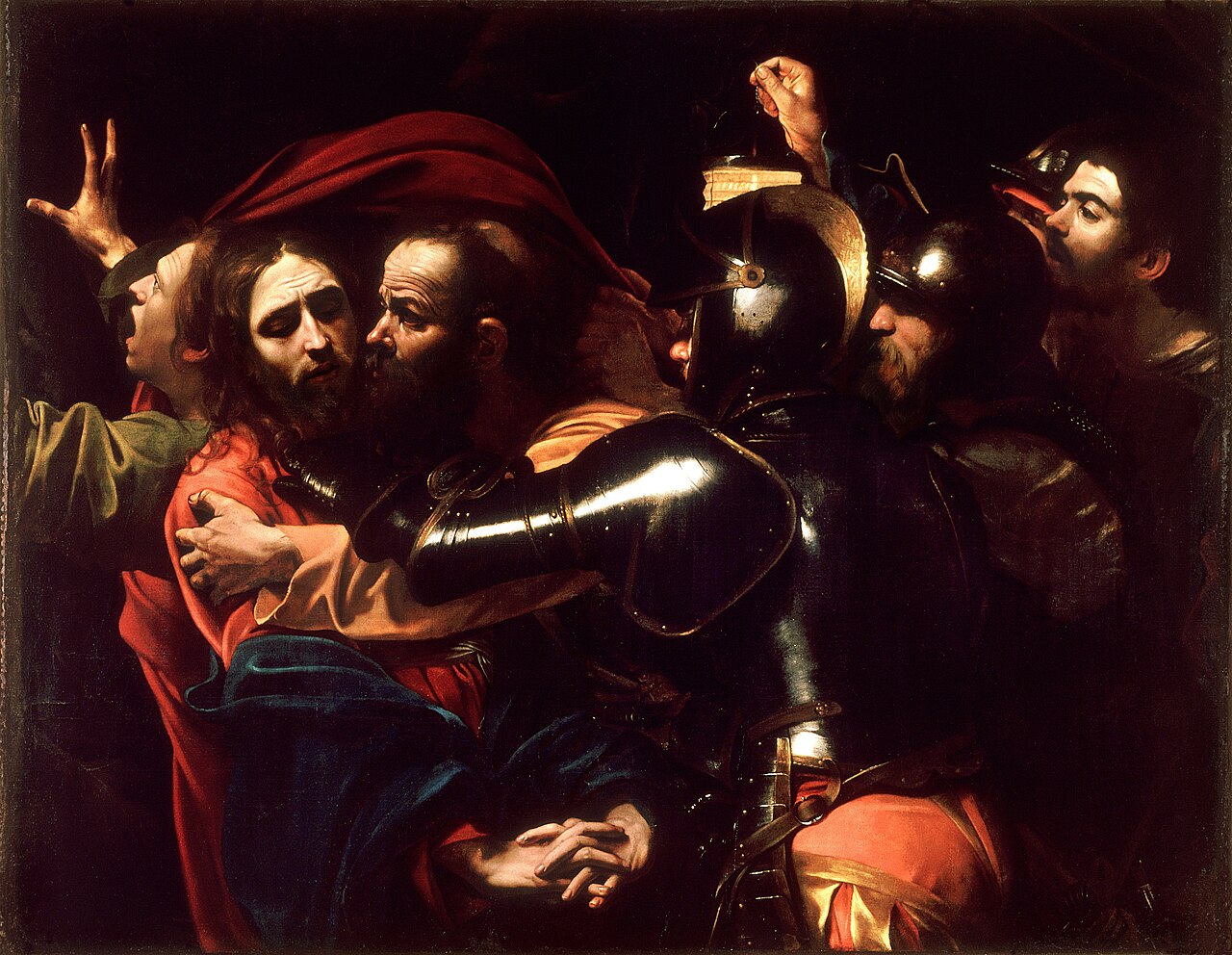
The chiaroscuro in “The Taking of Christ” by Caravaggio, 1602
The early 17th century was chaotic, but Caravaggio’s art defined it. His canvases shimmer with divine light yet plunge the viewer into deep shadow, reflecting a time when religion, politics, and human emotion were locked in perpetual tension. Caravaggio’s art did more than redefine painting; it exposed the psychological depths of belief and the raw conflict between sin and redemption, leveraging the era’s upheavals to powerfully fill its own sails.
A Multifaceted Era Complicates the Artistic Landscape
To understand the ways Caravaggio’s art has evolved (and is still evolving), it’s important first to reflect on the spiritual and geopolitical conditions of the era, which remain complex.
The Counter-Reformation was an interesting environment for artists, patrons, and theologians alike, creating uncertainty and leading to an imperative for art to instruct and move the faithful. Rome’s artistic life flourished, securely supported by the Church’s steadfast, renewed commitment to powerful visual narratives. Of note, the desire for Caravaggio’s art increased as the public reacted powerfully to his dramatic realism, a sign that consumers of culture were continuing to invest in art despite ongoing moral and political uncertainty. Meanwhile, concerns over doctrinal purity and the artist’s own policy uncertainty (his volatile temperament) cast shadows over his career.
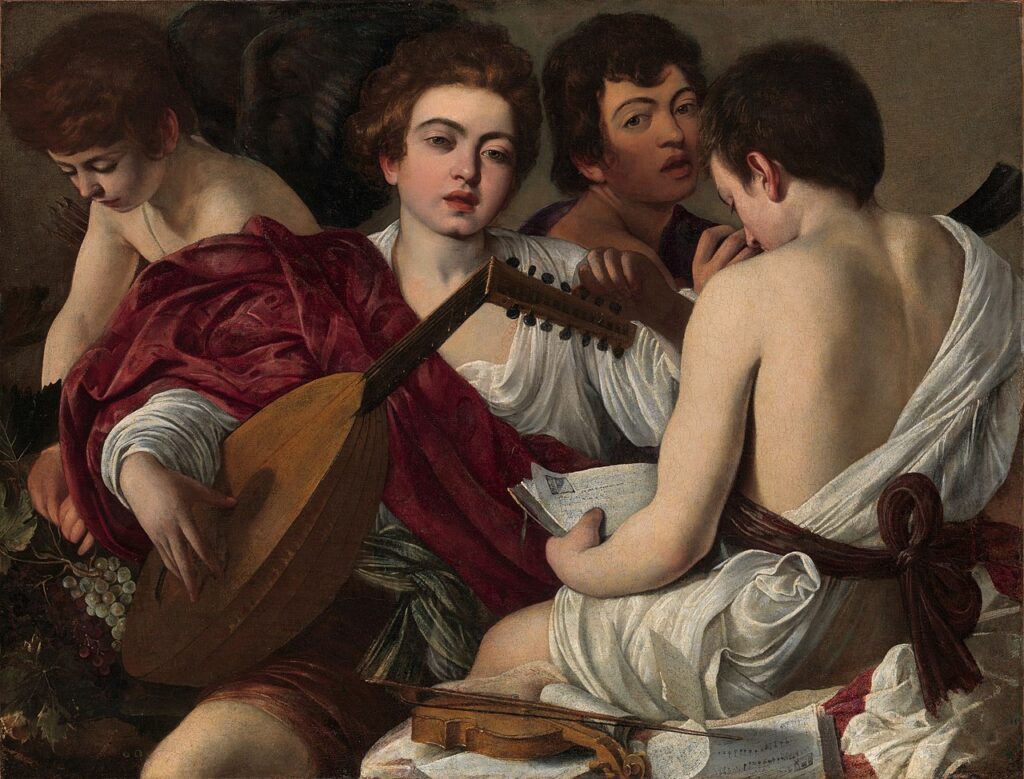
As artists navigated this environment, they were simultaneously dealing with shifting emotional and spiritual demands. The era’s forecast for idealized, balanced art remained historically low, giving way to the visceral drama of Caravaggio’s style. Profitability among artists was improving, albeit unevenly; patrons, still fiscally and spiritually cautious after years of anxiety, were curtailing investment in traditional, distant forms. Artists, in turn, were moderating their expectations: Caravaggio’s contemporaries initially reported shock and scandal at his realism. However, overall acceptance saw a significant rise from previous years when Renaissance idealism temporarily spurred safer commissions. This shift suggests that the era of pent-up demand for idealized beauty was fading, giving way to a more cautious environment marked by shifting spiritual priorities, patronage pressure, and restrained classicism.
It was within this charged artistic vacuum, characterized by the Church’s new demands and the market’s rejection of old ideals, that Caravaggio forged a radically new visual style.
The Visual Language of Theological Narrative
Caravaggio’s light was not symbolic—it was divine intrusion. It cut through darkness like revelation, exposing the sacred in the everyday and the divine in the damned. In works such as The Calling of Saint Matthew, the viewer witnesses grace erupting into the mundane, transforming a tax collector’s table into a moment of eternal choice.
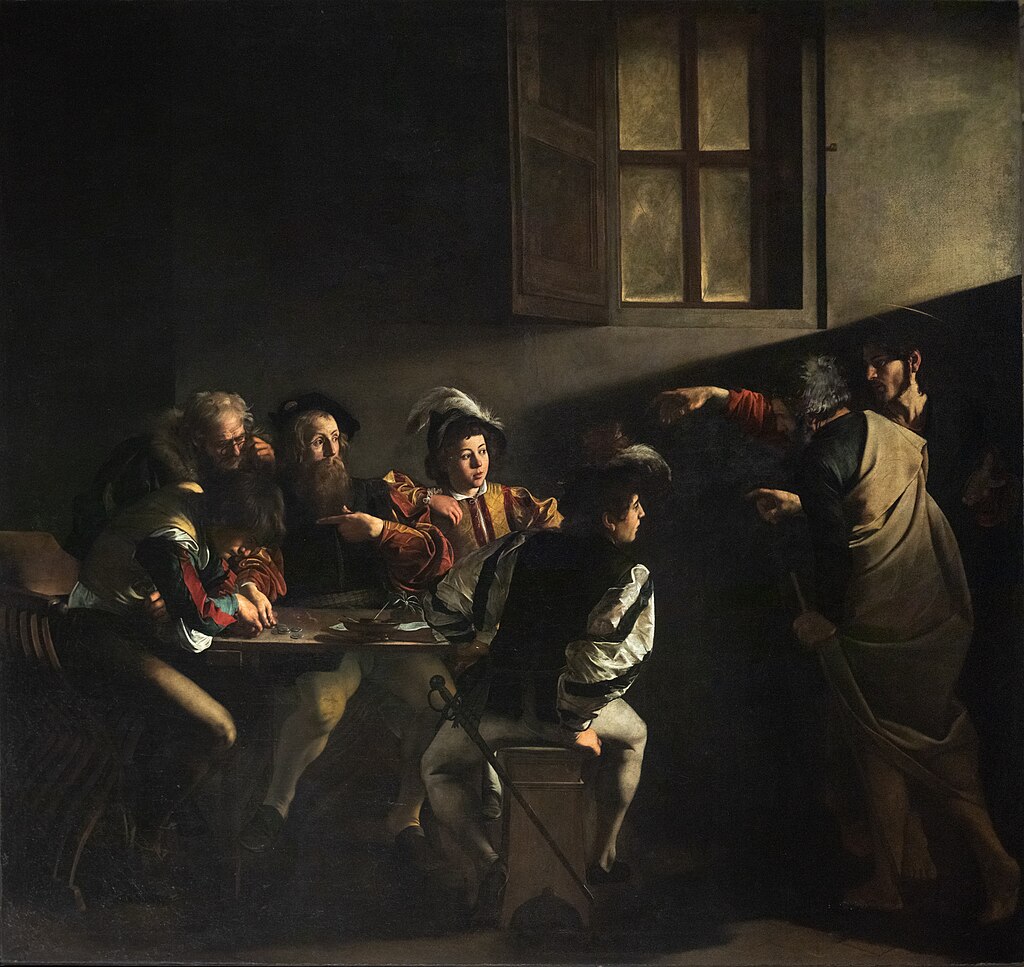
Caravaggio’s work, which gave faith a human face—wrinkled, wounded, often terrified—was both unsettling and magnetic, capturing both the agony of disbelief and the intimacy of conviction. Moreover, the Church, initially scandalized, soon recognized his power to move hearts. Caravaggio’s art became the visual language of a Church, augmenting theological narrative.
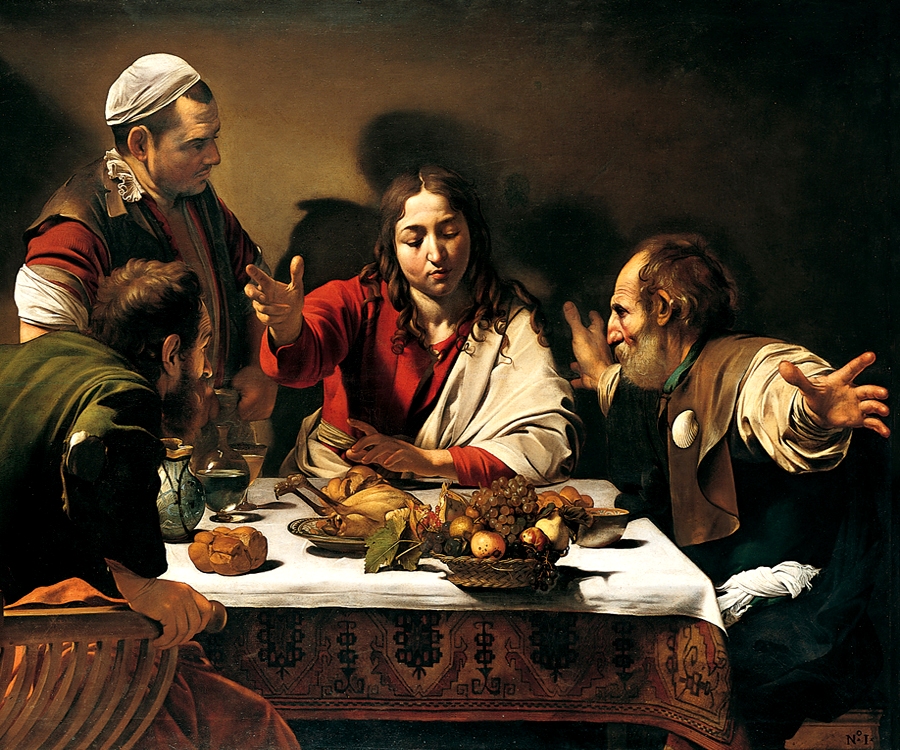
The Legacy of Caravaggio’s Art
More than four centuries later, Caravaggio’s art continues to influence how we perceive emotion, realism, and faith. His technique reshaped European painting, inspiring artists with chiaroscuro lighting. But his legacy extends beyond aesthetics—it lies in the courage to confront contradiction.
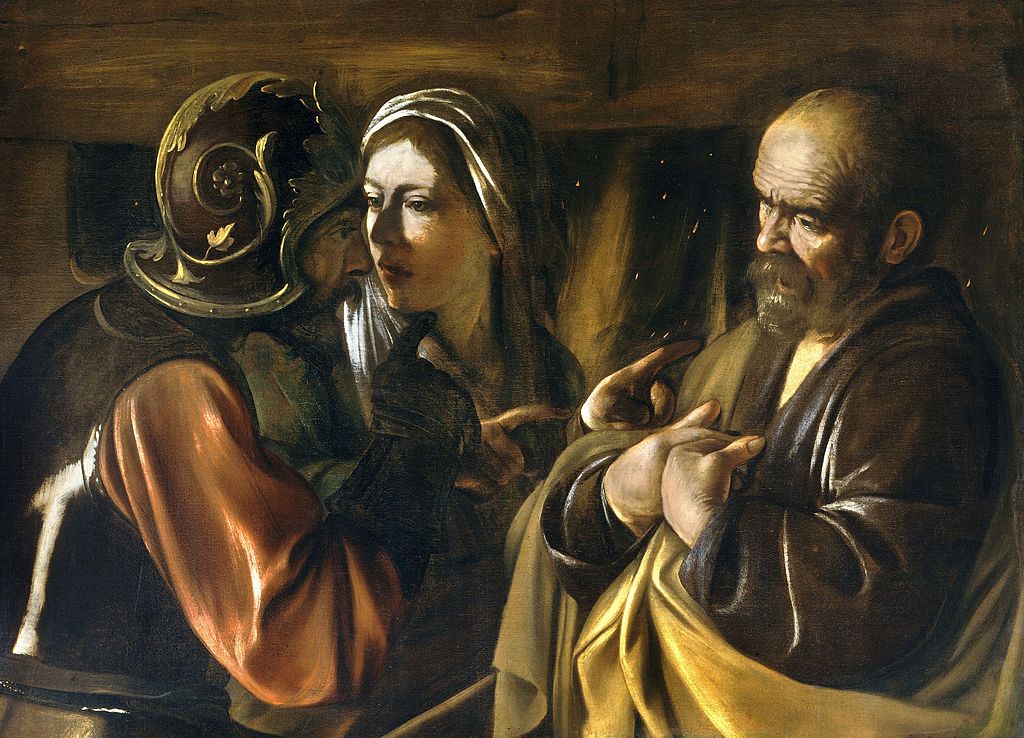
Today, Caravaggio’s vision remains strikingly relevant. His art is a reminder that illumination is born from shadow, and that the human condition—defined by conflict and grace alike—remains the ultimate canvas.
In the end, Caravaggio’s art is more than a chronicle of faith. It is a portrait of transformation: a testament to how turbulence can fuel creativity, and how, even in darkness, the pursuit of truth can still cast light.
